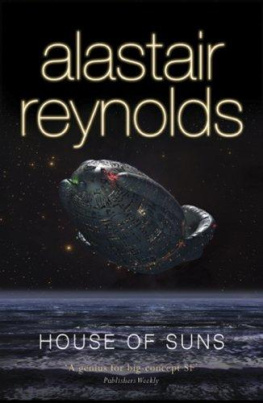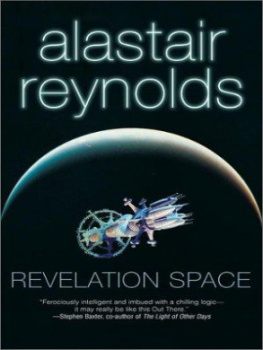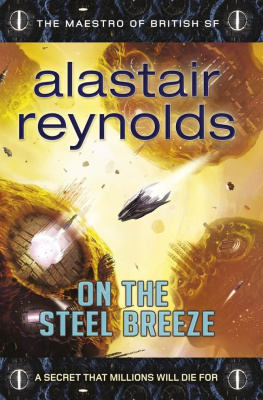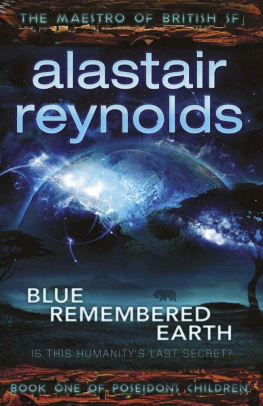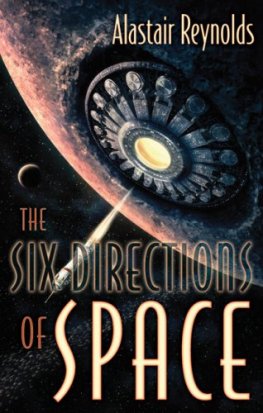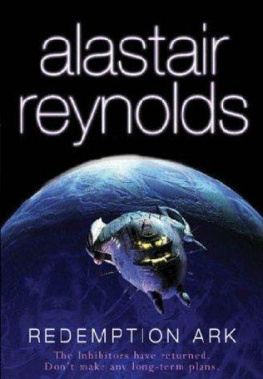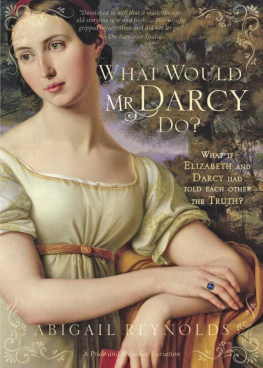House of Suns
Alastair Reynolds
Ace Books by Alastair Reynolds
REVELATION SPACE
CHASM CITY
REDEMPTION ARK
ABSOLUTION GAP
DIAMOND DOGS, TURQUOISE DAYS
CENTURY RAIN
PUSHING ICE
GALACTIC NORTH
THE PREFECT
HOUSE OF SUNS
THE BERKLEY PUBLISHING GROUP
Published by the Penguin Group
Penguin Group (USA) Inc.
375 Hudson Street, New York,New York 10014, USA
Penguin Group (Canada), 90Eglinton Avenue East, Suite 700, Toronto, Ontario M4P 2Y3, Canada
(a division of PearsonPenguin Canada Inc.)
Penguin Books Ltd., 80Strand, London WC2R ORL, England
Penguin Group Ireland, 25St. Stephens Green, Dublin 2, Ireland (a division of Penguin Books Ltd.)
Penguin Group (Australia),250 Camberwell Road, Camberwell, Victoria 3124, Australia
(a division of PearsonAustralia Group Pty. Ltd.)
Penguin Books India Pvt.Ltd., 11 Community Centre, Panchsheel Park, New Delhi110 017, India
Penguin Group (NZ), 67Apollo Drive, Rosedale, North Shore 0632, New Zealand
(a division of Pearson NewZealand Ltd.)
Penguin Books (SouthAfrica) (Pty.) Ltd., 24 Sturdee Avenue, Rosebank, Johannesburg 2196,
South Africa
\ Penguin Books Ltd., Registered Offices: 80 Strand,London WC2R ORL, England
This is a work of fiction. Names, characters, places,and incidents either are the product of the authors imagination or are usedfictitiously, and any resemblance to actual persons, living or dead, businessestablishments, events, or locales is entirely coincidental. The publisher doesnot have any control over and does not assume any responsibility for author orthird-party websites or their content.
HOUSE OF SUNS
Published by arrangement with the Orion PublishingGroup.
Copyright 2008 by Alastair Reynolds.
All rights reserved.
No part of this book may be reproduced, scanned, ordistributed in any printed or electronic form without permission. Please do notparticipate in or encourage piracy of copyrighted materials in violation of theauthors rights. Purchase only authorized editions.
ACE and the A design are trademarks of Penguin Group(USA) Inc.
eISBN : 978-1-101-06127-5
An application to register this book for cataloging hasbeen submitted to the Library of Congress.
http://us.penguingroup.com
To Tracy and Grace:
big and little sister,
with love
PART ONE
I was bornin a house with a million rooms, built on a small, airless world on the edge ofan empire of light and commerce that the adults called the Golden Hour, for areason I did not yet grasp.
I was a girl then, a singleindividual called Abigail Gentian.
During the thirty years of mychildhood, I only saw a fraction of that vast, rambling, ever-changing mansion.Even as I grew older, and gained the authority to wander where it suited me, Idoubt that I ever explored more than a hundredth of it. I was intimidated bythe long, forbidding corridors of mirror and glass, the corkscrewing staircasesrising from dark cellars and vaults where even the adults never went, the roomsand parlours that - although the adults and housekeepers never said as much inmy presence - were alleged to be haunted, or in some way not convivial toanything other than transitory occupation. The elevators and dumb waitersalarmed me when they moved without apparent instruction, obeying someinscrutable whim of the houses governing persona. It was a mansion of ghostsand monsters, with ghouls in the shadows and demons scuttling behind thewainscotting.
I had one true friend, although Icannot now remember his name. He arrived occasionally, but only ever for shortvisits. I would be allowed to watch the approach and docking of his privateshuttle, viewing it from the airtight vantage of a glass-windowed belvedereperched above the mansions highest tower. I was always pleased when Madame Kleinfelterallowed me up to the belvedere, and not just because such an occurrencesignalled the arrival of my only true companion. From there I could see theentirety of the house, and much of the world on which it was built. The housecurved away in all directions until it met the sharp bend of the planetoidsjagged horizon, a thin margin of rock marking the limit of my home.
It was a strange building, althoughfor a long time I had nothing to compare it with. There was no organised planto it, no hint of symmetry or harmony - or if there ever had been, thatunderlying order had been lost beneath countless additions and alterations -work that was still ongoing. Though the planetoid had no atmosphere, andtherefore no weather, the house was designed as if it belonged on a world whereit rained and snowed. Every distinct part of it, every wing and tower, wassurmounted by a steep-sided, blue-tiled roof. There were thousands of roofs,meeting each other at odd, unsettling angles. Chimneys and turrets, belvederesand clock towers punctuated the haphazard, dinosaur-backed roofline. Some partsof the house were only one or two storeys high; others had twenty or morelevels, with the tallest parts rising like mountains from the foothills ofsurrounding structures. Windowed bridges spanned the gaps between towers, asilent, distant figure occasionally stealing behind their illuminatedportholes. It was less a house than a city in which you could walk from oneside to the other without ever stepping outside.
Later in life I would learn thereason for my home being the way it was, the reason why the building work neverceased, but as a child I simply accepted it unquestioningly. I knew the housewas different from the ones I saw in books and story-cubes, but then nothing inthose books or cubes resembled any significant aspect of my life. Even before Icould read, I knew that we were rich, and it had been impressed on me thatthere were only a handful of other families whose wealth could be compared toour own.
Youre a very special young lady,Abigail Gentian, was what my mother told me on one of the many occasions whenher ageless face addressed me from one of the houses panes. Youre going todo great things with your life.
She had no idea.
It did not take me long to realisethat the little boy must also be the child of a rich family. He came on his ownship, not one of the company-owned liners that occasionally conveyed lessermortals to and from our planetoid. I would watch it arrive from deep space,slowing down on a spike of cobalt flame before stopping above the outer wingsof the house, pirouetting into a landing configuration, flinging out skeletallanding legs and lowering with elegant precision onto the designated touchdownpad. Our familys symbol was a black cinquefoil; his was a pair of intermeshingcogs, the emblem painted on the ships sleek, flanged hull.
As soon as the shuttle was down Iwould rush from the belvedere, almost tumbling down the tightly wound spiralstairs threading the tower. Whichever clone nanny was looking after me that daywould take me to one of the elevators and we would travel up, down and sidewaysuntil we reached the docking wing. We usually got there just as the little boywas coming out, taking hesitant steps down the long, carpeted ramp from hisship, with two robots gliding alongside him.
The robots scared me. They werehulking things of dull, weatherworn silver, with heads, torsos and arms, butonly a single huge wheel in place of legs. Their faces consisted of a singlevertical line, like an arrow slit in a castle wall, at the leading edge of afierce wedge-shaped skull. They had no eyes, no mouth. Their arms weresegmented and ended in three-clawed hands, good for nothing except crunchingflesh and bone. In my imagination, the robots were keeping the little boyprisoner when he was not visiting me, doing horrible things to him - sohorrible that he could never quite speak of them even when we were alone. Itwas only when I was older that I grasped that they were his bodyguards, thatdeep within the dim architecture of their minds was something perilously closeto love.
Next page
